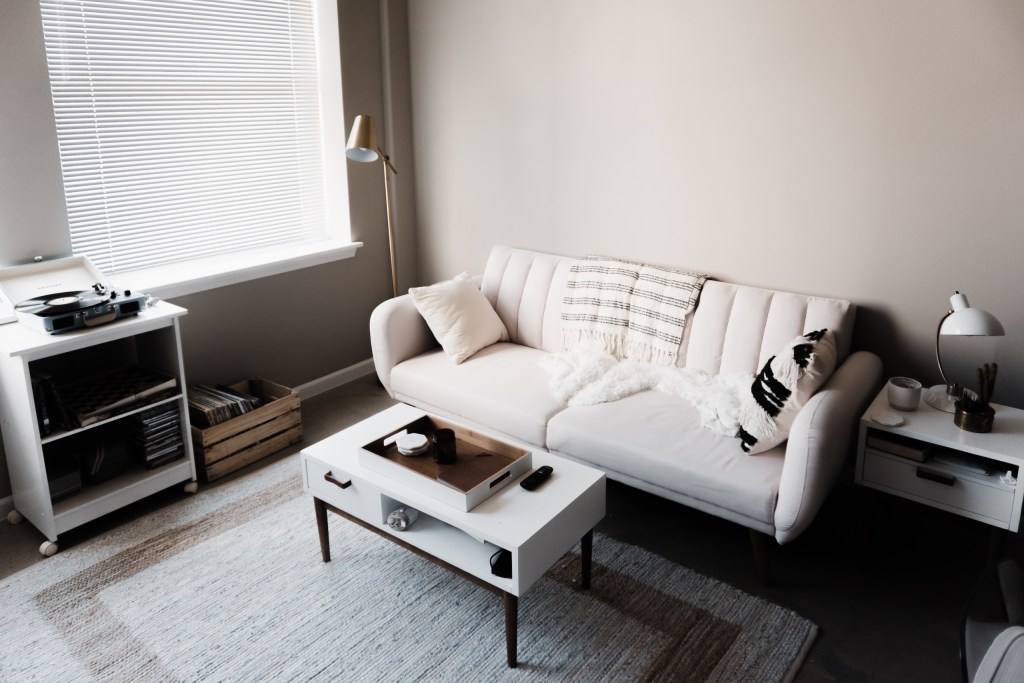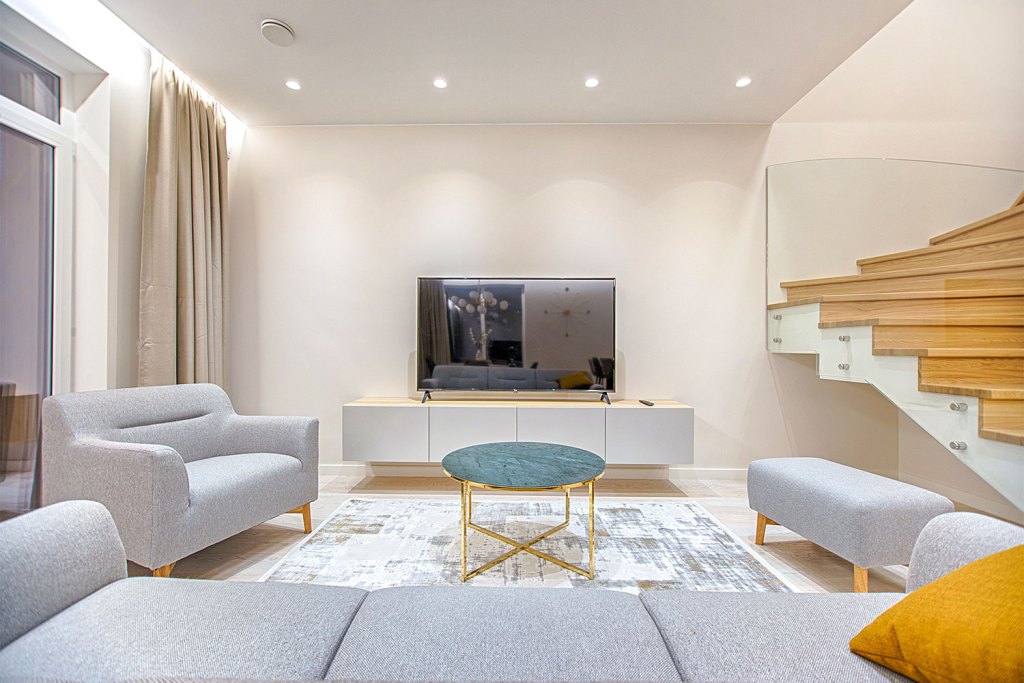Most of us have spent more time in our homes in the past 18 months than ever before. Because of this, it’s crucial for these spaces to not only be a sanctuary from the outside world but a reflection of who you are as a person. When embarking on your remodel to transform your home into your oasis, you’ll likely have to choose between two main design styles: minimalism vs maximalism. Minimalist designs are clean and simple when it comes to color, furniture, and overall decor, while maximalist enthusiasts love colors, patterns, textures, visible decor, and unique pieces of furniture.
While one isn’t necessarily better than the other, the two styles have come and gone in popularity over the decades for different reasons. To decide which is right for you, here are a few things to consider.

Why minimalism has been so popular
If you love everything Marie Kondo has to say, you may sit firmly in the minimalist camp. The design is meant to keep things stark and blank to elicit a feeling of calm and peace. A busy, cluttered area can bring on anxiety, so the “less is more” mentality is a key tenet here. This means clean lines, no fuss, and only keeping what you need. Minimalists tend to stick to white and ivory and accent the space with simple decor on the walls and neutral tones in textiles. Adventurous decorators may include pops of color in the wall art, textiles, or appliances to break up the white scheme. In a world that often feels chaotic, minimalism is meant to bring joy through focusing on the few things you actually need and love.

Is maximalism better than minimalism?
Minimalist design, while popular in the late ’90s and ’00s, is starting to wane in popularity. Many people, especially those who spend a lot of time at home, have decided to make their home cozier and inviting as opposed to posh and sophisticated. Maximalist designers forgo the starkness of minimalism in favor of bolder design choices—be it paint, furniture, wallpaper, and other elements that make a home feel, well, homey. People, now more than ever, need connection, and that often comes from being surrounded by family pictures, travel treasures, and other items that remind us that, even if you can’t be with family, they are not really so far away. Minimalism will never go away, of course — but maximalism is having a bit of a moment.

How to decide whether you are minimalist or maximalist?
The design you choose largely comes down to fashion, not function. If you feel much more relaxed in a space that doesn’t have a lot of frills and enjoy the beauty of natural tones and clean lines, then the minimalistic design may be right for you. However, if you enjoy color and feel content with books stacked on tables, prints on the walls, and 20 colored pillows on the couch, you may be leaning more toward a maximalist style. The key is not following some trend for the sake of it, but really leaning into what makes you happy. For some, that means having a lot to look at when you walk into a room. For others, you may want those treasures tucked away.
If you are stuck somewhere in the middle, know you are not alone. Many people like elements of both designs and incorporate them into their daily lives and decor. For instance, keeping everything in the kitchen tidy and stored away can actually reduce stress by giving you a clean and open space to work with. Then, you can fill the living room with pictures, keepsakes, and cozy pillows and blankets to make friends and family feel more at home.
The bottom line is that you want your home to feel like home — whatever that might look like to you. If you’re new to homeownership and aren’t really sure what you want, take time looking online and in stores to find inspiration. Look at minimalist artwork, furniture, and color palettes and see if it fills you with a sense of peace. Then, do the same with a more maximalist style and pay attention to your emotions and comfort level. When you visit your friends’ homes, note what you like and dislike about the decor, then ask yourself why that may be.
After a little bit of research, you may find yourself leaning toward one side or the other, or maybe you’ll realize that you’re somewhere in between. Either way, trust your design instincts and have a little fun.



